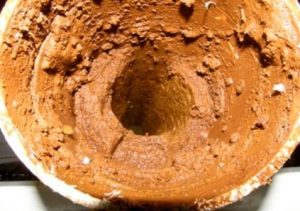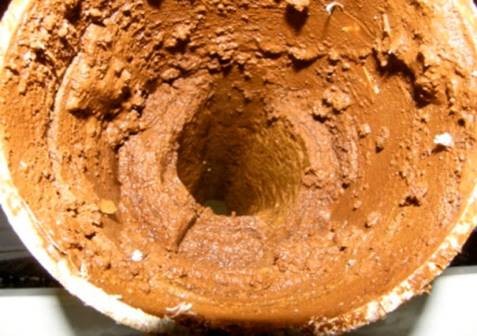
Tolerable Iron Levels In Hot Water Loops
Regardless of the age of your HVAC system, some level of iron is inevitably present.
Unfortunately, iron has a corrosive effect, so managing iron levels and iron’s impact on equipment is an ongoing process in the world of water treatment.
Evaluate Iron Levels in Your System
Ideally, iron levels should be low: less than 2-3 ppm total iron. However, systems vary, so it can be hard to determine what the tolerance level for iron is in any given system. And if there is glycol in the system, the tolerance might be slightly higher.
For both new and old systems, it’s vital to analyze baseline water samples to determine iron levels. Establishing a baseline can help determine whether iron levels are static increasing, which could indicate ongoing corrosion. Or going down, indicating filtration is proving effective. This baseline analysis must also determine whether the iron is soluble or insoluble.
Insoluble iron can be removed with filtration and a suitable filtration aid. Soluble iron must be converted to insoluble in order to be removed by filtering. If this conversion is not possible, flushing and then cleaning is needed to remove the iron.
In older systems that have been improperly treated, or new systems that have not been properly cleaned and passivated may have iron levels may far exceed the recommended levels.

Negative Effects of Iron
Insoluble iron can have an erosive effect on system metals. This can cause a variety of negative outcomes, including pump seal wear. This iron can cause plugging and fouling in small valves and zones. And it plate out causing reduced heat transfer.
It’s also worth noting that iron in the water may be the result of microbes corroding the system, bacteria testing should be performed on routine basis. Planktonic bacteria levels may be inconclusive, efforts should be made to detect sessile bacteria.
To determine if there is ongoing corrosion of mild steel and copper components corrosion coupons should be utilized.
Finally, suitable corrosion inhibitor levels should be maintained to help prevent on-going corrosion.
Controlling Iron in Closed Loop Systems
To summarize, here’s the Chemtex advice on controlling iron in closed loop systems, a vital part of your HVAC system which is often prone to being overlooked.
– Make sure your water treatment company is testing your system on a regular basis. They should perform tests at least quarterly, and more frequently if these issues present: water loss; increasing iron levels; poor corrosion coupon results.
– Corrosion coupon studies must take place, with coupons analyzed at least every 60 -90 days.
– Verify adequate filtration is being deployed to remove insoluble iron and debris.
We can help! Contact your Chemtex rep for a comprehensive review of the health of your closed loops to ensure peak efficiency and system longevity.
952.469.4965 | info@chemtexcorp.com


/NQA-ISO-9001-Logo-ANAB.jpg)